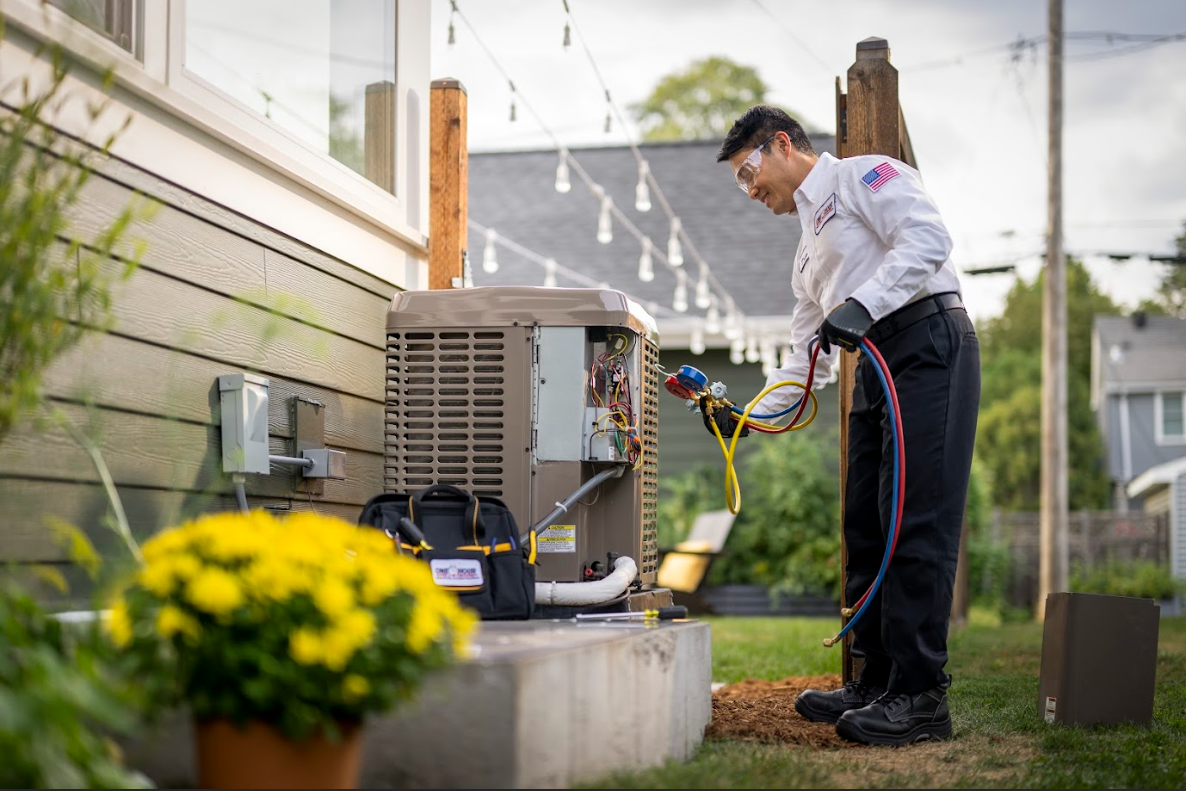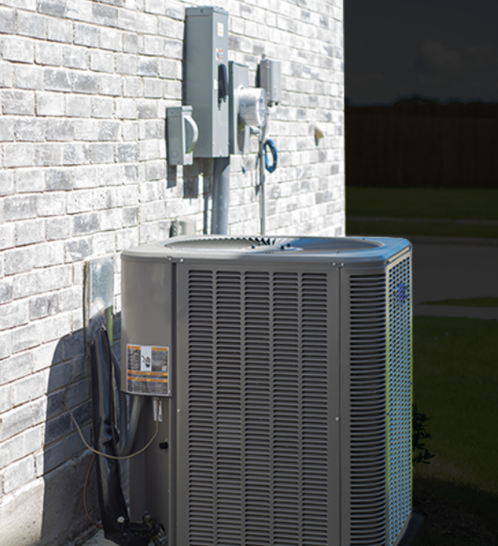
Simple ways to keep your home temperature even
Homes in Ogden see big swings: chilly canyon air in the morning, warm sun by mid-afternoon, and rapid cool-down after dusk. That makes even temperatures inside a real challenge. Hot upstairs, cold basement, stuffy guest room — it all costs comfort and money. The good news is that steady temperatures come from a few consistent habits and a system set up for local conditions. This playbook reflects what technicians see every week on service calls across Ogden, South Ogden, Washington Terrace, and Riverdale.
Start with airflow: the foundation of even temperatures
Air that cannot move cannot mix. If one room bakes while another chills, airflow is usually the reason. In many Ogden homes, registers get blocked by furniture, returns gather dust, and dampers sit half-closed since a remodel years ago. Clearing the path often solves the problem before any major work.
Keep supply registers and return grilles open and uncovered. A sofa or rug over a vent can skew a room by 3 to 6 degrees. Walk the home and look at damper levers on the round duct branches near the trunk line; set them parallel to the duct for open. Many older homes in East Bench neighborhoods have small return paths. In those cases, a door closed at night can isolate a room, causing it to overheat or overcool. Leaving doors slightly ajar helps the system balance.
If a room still lags, a static pressure test tells the real story. One Hour Heating & Air Conditioning can measure pressure at the furnace and in branches to spot bottlenecks. A small fix like a larger return grille or a short section of upgraded duct can stabilize a whole floor.
Filter discipline that actually works
A clean filter holds airflow steady. A dirty one throttles it, causing weak registers upstairs and short cycles that never finish warming or cooling the far rooms. In our dry, dusty summers and smoky weeks during fire season, filters load fast.
Most Ogden families do best with a 1-inch pleated filter swapped every 30 to 60 days. If the home has pets, 30 days is safer. If the system uses a 4-inch media cabinet, expect 4 to 6 months. Avoid super-restrictive “allergen” filters unless a tech has checked the blower’s capacity; they can starve older blowers and cause temperature swings. Mark change dates on your phone or the furnace cabinet. Consistency keeps the entire home within a tighter range.
Thermostat strategy that supports balance
Thermostats are the brain, and brains need clean data. If the thermostat sits in a sunny hallway in Ogden Valley exposure or over a return grille, it can misread by several degrees and cause persistent hot and cold rooms.
Relocating the thermostat to an interior wall away from direct sun and vents gives better control. Smart thermostats with remote sensors help more, especially in two-story homes in North Ogden where upstairs gains heat all afternoon. Setting the system fan to run on low furnace repair Ogden UT for 10 to 20 minutes each hour during peak swings can mix air between cycles and level out rooms without much energy cost.
Avoid large temperature setbacks. Big swings force long cycles that overshoot and create drafts. A 2 to 4 degree setback is usually the sweet spot for Ogden’s climate.
Seal and insulate the envelope
Even the best HVAC struggles against leaks and weak insulation. In bungalows near 25th Street and older farmhouses on the west side, attics often sit at R-19 or less. Upstairs rooms roast in July and lose heat in January because heat flows through the ceiling faster than the system can keep up.
Upgrading attic insulation to R-38 to R-49 flattens the temperature curve across the day. Air sealing is just as important. Gaps around can lights, attic hatches, and plumbing penetrations let conditioned air leak out and attic air leak in. A simple blower door test identifies these leaks. Many homeowners see a 2 to 4 degree improvement in upstairs consistency after sealing and insulating, along with lower bills.

Balance the system with dampers and minor duct changes
Most uneven homes do not need a new system; they need balance. Manual balancing uses dampers in the basement or crawlspace to steer more air to cool or warm-challenged rooms. Technicians set them in mild weather, then check again during a temperature extreme.
For homes with long runs to bonus rooms above garages in South Weber or Roy, flexible ducts may be undersized or kinked. Replacing a 6-inch run with an 8-inch, or shortening a tight bend, can be the difference between a stagnant room and a comfortable one. On split-level homes, adding a dedicated return in the top floor hallway often fixes stubborn upstairs heat.
Two-story homes in Ogden: beat the stack effect
Warm air rises, and Ogden’s afternoon sun exaggerates that. The “stack effect” pulls air from lower levels and pushes it out upper leaks, leaving the basement chilly and the top floor warm.
Useful habits help. Close basement supply registers slightly during cooling season and open them in heating season. Run the system fan in the late afternoon to mix floors. If the furnace has an ECM variable-speed blower, a constant low fan setting costs only a few dollars a month and keeps temperatures steadier.
Zoning is the long-term fix for many two-story homes. Two thermostats with motorized dampers let each floor call for what it needs. In Washington Terrace colonials, zoning often pays back in comfort immediately and in energy savings over a few seasons.
Room-by-room fixes that matter
Some rooms have special problems. A home office with equipment, a nursery with a single west-facing window, or a bonus room over a garage will not behave like the rest of the house. A booster fan may sound like a quick fix, but it treats the symptom, not the cause.
Look at load first. Window film or a cellular shade can cut solar gain by 20 to 30 percent. A properly sized supply and a return path keep pressure even with the door closed. If the main system cannot serve the space well, a ductless mini-split is a clean solution. In Ogden, many homeowners add a small wall-mounted unit for a south-facing office or converted attic. It runs independently and stabilizes problem zones without overworking the central system.

Humidity and filtration play supporting roles
Utah air is dry most of the year. Low humidity in winter makes air feel cooler at the same temperature. That can drive the thermostat higher, which triggers longer cycles and wider swings. A whole-home humidifier set around 30 to 35 percent in winter helps the home feel even without over-conditioning.
During smoky periods, higher filtration can reduce dust buildup on coils and keep airflow consistent. If upgrading to a higher MERV filter, have airflow checked so the blower stays within safe limits.
Maintenance that prevents uneven temperatures
Small performance losses cause big comfort gaps by season’s end. A partially clogged evaporator coil, a slipping blower belt on older equipment, or a weak capacitor can reduce airflow by 10 to 20 percent. That loss shows up first as uneven rooms.
A spring AC tune-up and a fall furnace check keep airflow and refrigerant charge where they should be. Technicians check static pressure, blower speed settings, temperature rise or drop across the coil, and safety controls. These numbers tell whether the system is pushing the right amount of air to all spaces. One Hour Heating & Air Conditioning offers maintenance tuned to Ogden’s climate so the home stays steady through wind, dust, and sudden cold snaps.
When a right-sized system solves the problem
If the equipment is oversized or undersized, balancing only goes so far. An oversized unit short-cycles, which leaves humidity high in summer and never fully conditions distant rooms. An undersized system runs forever and still fails to bring upstairs into range on hot days.
A proper load calculation considers square footage, window type, insulation levels, orientation, and occupancy. Replacements in Ogden tract homes often move from a 100,000 BTU furnace to 80,000 or even 60,000 with a variable-speed blower, improving comfort and runtime quality. On the cooling side, a right-sized 2 to 3 ton system with a matched coil and correct airflow will spread cooling more evenly than an old, oversized 4 ton that short-cycles.
Quick homeowner checklist
- Keep all supply and return vents open and clear by a few inches.
- Replace 1-inch filters every 30 to 60 days; 4-inch filters every 4 to 6 months.
- Use a small fan-on schedule daily to mix air between cycles.
- Add attic insulation to R-38 or higher and seal obvious attic leaks.
- Ask for a static pressure and balance check during your next service.
Local notes for HVAC Ogden
Elevation and canyon winds create rapid temperature drops after sunset. Systems that hold a steady fan low speed in the evening mix air and prevent cool downstairs and warm upstairs pockets. West-facing rooms in Farr West and Plain City pick up afternoon heat; window treatments plus duct balancing usually tame these hotspots. Older homes near Ogden High often have undersized returns; adding a return in the upstairs hall changes the whole feel of the house. Newer homes in North Ogden with long duct runs to bonus rooms benefit from upsizing a single branch or adding a dedicated return to that space.
Ready for steadier comfort?
Even temperatures are not luck; they come from clear airflow, tight envelopes, honest sizing, and smart controls. If a room never feels right, or if upstairs and downstairs are playing tug-of-war, schedule a visit with One Hour Heating & Air Conditioning. The team runs the numbers, checks pressures, and adjusts the system the way Ogden homes need. Call to book a tune-up, balancing visit, or a no-pressure estimate on zoning or a mini-split. Steady comfort is within reach, and it starts with a local expert who knows what Ogden weather does to a home.
One Hour Heating & Air Conditioning provides trusted furnace repair in Ogden, UT and full-service HVAC solutions for homes and businesses. Family-owned and operated by Matt and Sarah McFarland, our company is built on honesty, hard work, and quality service—values passed down from Matt’s experience on McFarland Family Farms, known across Utah for its sweet corn. As part of a national network founded in 2002, we bring reliable heating and cooling care backed by professional training and local dedication.
Our licensed technicians handle furnace and AC installation, repair, and maintenance, heat pumps, ductless mini-splits, thermostat upgrades, air purification, indoor air quality testing, humidifiers, dehumidifiers, duct cleaning, zoning systems, and energy-efficient replacements. We stand by a 100% satisfaction guarantee through the UWIN® program and provide honest recommendations to help Ogden homeowners stay comfortable year-round.
Call today for dependable service that combines national standards with a personal, local touch.
One Hour Heating & Air Conditioning
1501 W 2650 S #103 Phone: (801) 405-9435 Website: https://www.onehourheatandair.com/ogden
Ogden,
UT
84401,
USA